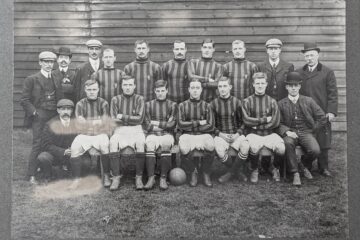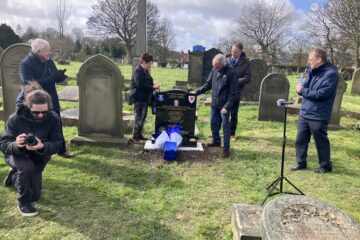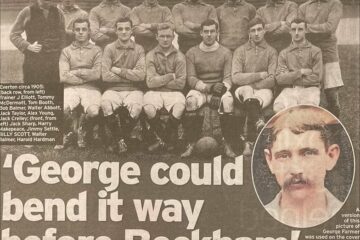Godfrey Turner, who was almost certainly the first southerner to play for Everton Football Club, came from an eminent family background. His father, Charles, was a prominent floriculturist in Victorian England and was the lessee of the Royal Nurseries at Slough, where he employed around 100 people. He had formerly held the licence of a flower nursery at nearby Chelvey with his wife, Susannah. Godfrey, their sixth child, was born there on 26 July 1854.
Godfrey was educated at Crawford School and Twickenham College, after which his movements are something of a mystery. Official FA records place him acting as umpire at an international match between Scotland and England – 23 March 1878 – at Hampden Park in Glasgow where the home side won 7-2. However, the claim that he was representing Edinburgh University does not comply with their Matriculation Album that lists his arrival as being the 12 December 1878. At that moment in time, Turner claimed to be a member of the London Wanderers club.
Nevertheless, when he did arrive, Godfrey joined the association football team and was immediately appointed captain. He took part in the game against Glasgow University, and was member of the touring side which was beaten 4-1 by Nottingham Forest at Trent Bridge. Turner also represented his university on the cricket field before leaving after just a year, to work as a brewer.
During his time at university, he had become acquainted with members of the Bateson family, and this may have been the reason why he chose to open a business in their home town of Liverpool.
Around 1880, the name of G.W. Turner started to appear in the Liverpool newspapers with respect to playing for Wavertree Cricket Club at Sandown Lane. Assisted by his friend, J. F. Bateson, he tried to form an association football team amongst the Wavertree members of the time, but it disbanded after just one season. Nonetheless, the football skills of Godfrey Turner had been noted and he was invited to represent Everton at Stanley Park on 18 November 1880 against the church of St Mary in Kirkdale. Turner scored twice as Everton won 7-0.
The 1881 census found him living with the Hughes family at 48 Chestnut Grove, Wavertree, where he gave his occupation as brewer. Following his single game with Everton, Turner joined Bootle Football Club and was in the side when they faced Everton in January 1882 at Bootle Cricket Ground. Everton won 4 -1. The following month Godfrey Turner, along with the Bateson family, became a founder member of Liverpool Ramblers Football Club.
He took part in the victorious FA Cup tie with Southport (the first played in Liverpool) and was a member of the team that lost 3-0 against Bolton Wanderers in the following round. The Ramblers were founder members of the Liverpool & District FA and Godfrey Turner captained the representative XI when they played their introductory match against Walsall. He took part in the first Liverpool FA Cup Final, but his club were beaten 3-1 by Bootle on the sports ground of Liverpool College at Fairfield.
The highlight of his time with Ramblers came when he was invited to make a guest appearance for the Corinthians during their Christmas tour of 1886, where he once again linked up with his former team mate from Edinburgh University, Dr John Smith. The tour match against Everton took place at Anfield where the home side were beaten by four goals to two. Godfrey Turner spent the rest of his football career with Liverpool Ramblers and became one of their most senior members.
At the time of the 1891 census, he was lodging with the Robinson family at 11 Rathbone Road, while in 1901 he was in 10 Ashfield, Wavertree, still in the business of brewing beer, and able employ a housekeeper. He later settled in Wallasey where he spent his declining years before entering the Turner Memorial Home in Liverpool. Godfrey Turner died at this location and his body was taken back to Slough where his funeral service was held 24 July 1936 at the church dedicated to St Mary.



